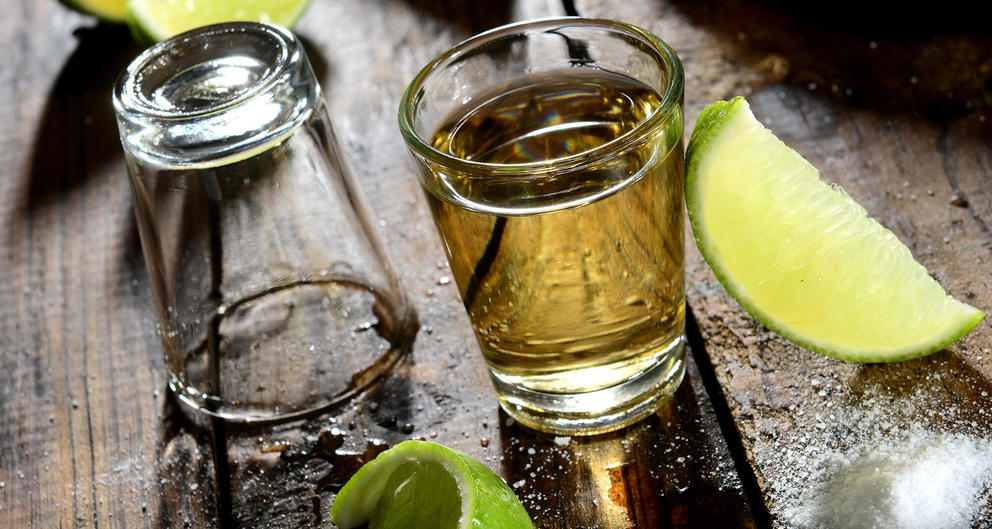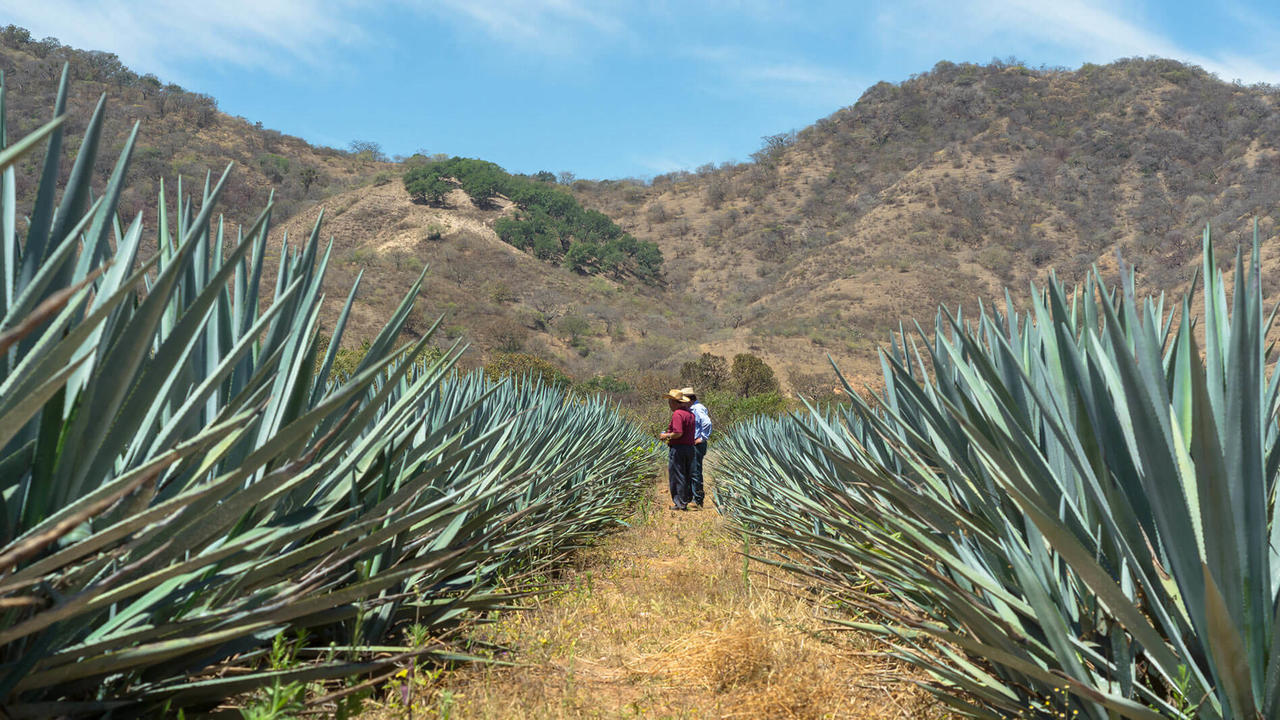What is tequila? What is tequila made from? These questions and more answered below!
Tequila is distilled from the juice of the abundant blue agave plant’s heart (known as the piña); it has become one of the most popular liquors in the world. While it’s the essential ingredient to the classic margarita, it’s just as popular served “neat” (or with a side of lime and salt, affectionately known as “legs” to it’s legion of fans).
Tequila had a rocky history climbing to the top-shelf of the bar. Let’s learn a little more about this drink, where it came from, how it’s made, and some of the brands that best represent it today.
Thirsty Conquistadors and Cactus Fields: a History of Tequila
Tequila originated, unsurprisingly, in a Mexican town called Tequila–you can still find it today, roughly 40 miles outside of Guadalajara in the Jalisco state of Mexico.
Mexican tequila has been around since the 1500s, when the Spanish conquistadors drank all of their brandy and decided, “Hey, we should probably start making more liquor.” They saw the abundant Agave fields in the area to provide them their hooch, and the rest is history.
Actually, there was another step involved–but, we’ll talk about that in the distillation segment in a little while.
It was not until some 80 years later that Don Pedro Sanchez de Tagle began to mass-distill the liquor in Jalisco, calling the drink “tequila extract.” Don Cenobio Sauza (you’ll probably recognize his name from the still-popular Sauza brand of tequila) was the first to shorten the name to simply “tequila.”
The liquor, whether tequila gold, tequila silver, is remarkably similar to the drink known as mezcal–in fact, the only true difference between tequila and mezcal is that for the production of tequila, the agave is boiled or steamed before starting the fermentation process. For most Mezcal production, the agave is cooked in wood fire pits, which gives the distinctive smokey flavour.. In the “Venn Diagram” between the circles of tequila and mezcal, there is an interlocking center area–a drink known as “mixto tequila.” Purists might scoff at mixto, but in our opinion, it’s perfectly drinkable–especially when mixed.
Different Types of Tequila
Blanco
Blanco “white” tequila is characterized by not being aged; rather, it’s bottled immediately (or within two months) after it’s distilled. This is the harshest variety with strong agave flavors, and is typically the most commonly used tequila for shots or tequila slammers.
Reposado
Reposado translates to “rested” (i.e. aged), and this variety is aged for at least two months, but not more than a year in an oak barrel. Thus, it takes on more of the taste of the wood
Anejo
Anejo means aged, hence the requirement that this variety of tequila being aged for over a year in small oak barrels or casks. This obviously lends tequila anejo its distinctive oaky flavor.
Along the same lines, there’s also a recently-added category of high end tequila known as “Extra Anejo” that must be aged for at least 3 years. These are usually the choice for a sipping tequila.
How Tequila Is Distilled

Now, let’s take a look at how the drink is distilled before it ends up in your Friday night tequila slammer.
First, the agave’s juices are squeezed from the plant itself. This can be done by hand, but is more commonly accomplished by presses or specific juicers and/or clamps.
Next, the distinctive cactus juice is fermented for three or more days in stainless steel or wooden vats. The temperature slowly rises and the natural wild yeast converts the juice’s sugars into potent alcohol. The process is not done yet, though, because at this stage it’s only about as strong as wine or beer.
Now, we’re getting to the good part: distillation! This is where the Conquistadors’ European (and, before them, Arabic Moorish) influence helped take things to the next level: the copper still is then utilized to distill the juice.
The method from this point on can vary from distillery to distillery, but tequila usually distilled at least twice–sometimes three times, leading to a higher alcohol content (proof). If you’re really into learning about the distillation process, find out whether the bottle you’re interested in was distilled in wood, steel, or copper (copper tequila distilling is increasingly rare, but can still be found if you look hard enough).
Lastly, the liquor is cut with a small percentage of water to turn it into the drink utilized by today’s best tequila brands.
You might be wondering where the famous “worm” comes in; for brands that still use it, this is added right before the liquor is bottled.
Most Popular Brands
Not too long ago, it was difficult to find much variety in tequilas outside of Mexico, or the best specialty liquor stores. Jose Cuervo and Sauza were the most commonly found brands worldwide.
The increased popularity of the liquor in the last few decades has been a boon for tequila-holics around the globe. Premium and “craft” tequila brands abound–Patron is one of the most popular in the world, but carries too hefty a price tag for some.
Fortunately, mid-range brands like Espolon, Coa, Quiote and the delicious El Jimador tequila reposado (a favorite of ours) are now readily available in bars and liquor stores, along with relatively cheap tequila (but extremely drinkable) offerings from Lunazul and nearly countless other brands.
Depending on personal taste, everybody probably has a different list of their top 10 tequilas, but the ones that we’ve listed above are more than enough to get you started.
If you’re having trouble finding one that you like, ask yourself a few of the following questions:
- Do I like a crisp, bright taste, or do I prefer a mellower woody flavor? (For the former, choose a blanco tequila, for the latter, an anejo or extra anejo. For in-between,or if you’re not quite sure, it’s hard to go wrong with a good reposado.)
- What’s my budget? (If its on the lower end, you’ll find more variety in the blanco or reposado category. Have some money burning a hole in your pocket? There are many worse things in life you could splurge on than a high-quality extra anejo tequila–just don’t drink it all in one place!)
P.S. A few last notes before you pour your tequila and send it down the hatch
Wondering what to mix with tequila? Nearly all citrus juices make excellent tequila mixers, as well as lemon/lime sodas like Sprite, or grapefruit ones like Squirt. However, if you ask our opinion, if you’re drinking an anejo or extra anejo tequila, you’re drinking something closer to a nice scotch whisky. This means, to us, that you don’t need much else to enjoy it–maybe a splash of soda water or a little bit of ice (from frozen purified water, of course–don’t let that fluoridated, chlorinated stuff anywhere near a nice bottle).
However you choose to drink it, next time you order a tequila shot, sunrise, or a tasty marg, remember that you’re not just drinking liquor–you’re drinking a little piece of Mexican history.

